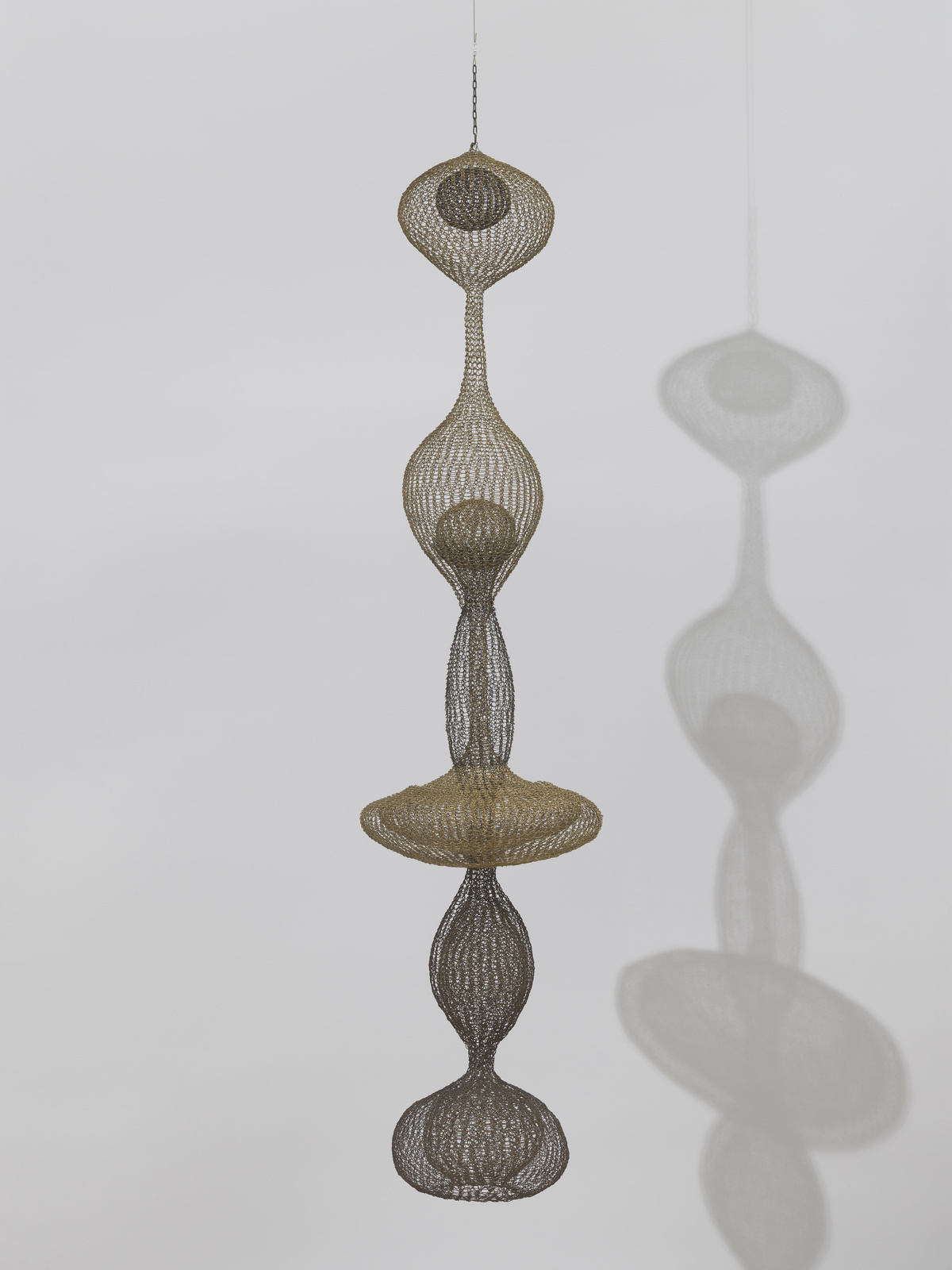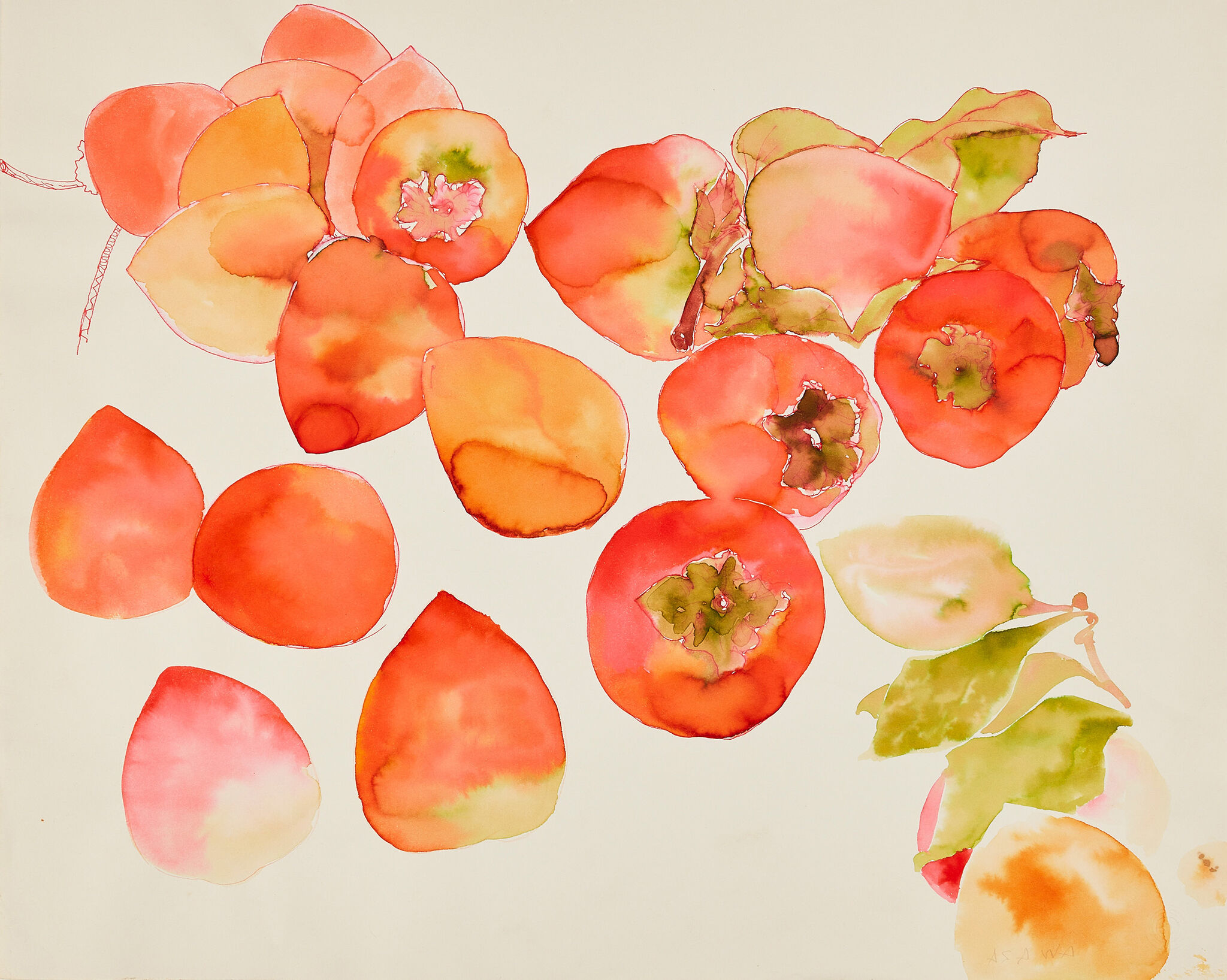Untitled (BMC.68, Stem with Leaves), c. 1948–49
Aug 30, 2023
0:00
Untitled (BMC.68, Stem with Leaves), c. 1948–49
0:00
Kim Conaty: This watercolor is both a somewhat abstracted representation of leaves on stems and it's also a color study where we really see Asawa working through primary and secondary colors.
Narrator: Kim Conaty is the Steven and Ann Ames Curator of Prints and Drawings, and organized this presentation of Ruth Asawa Through Line at the Whitney.
Kim Conaty: For example, you'll see areas where a red and yellow leaf overlap and the overlapping portion is orange. You'll also see areas where Asawa has used orange on white, giving us the color itself.
This watercolor is a great example of the type of work that Asawa was doing while at Black Mountain College.
Black Mountain College was a liberal arts college nestled in the woods of North Carolina and that environment was also very important for the students working there. Many of the teachers encouraged the students to go into the forest, to work from nature, to make collages from leaves, for example. You'll also see that Asawa leaves parts of the paper in reserve, meaning not painted on. So what we're getting that feels like a white is in fact the paper itself, and this idea of economy, using less and getting more, was also a key tenet of the teachings of Josef Albers that inspired Asawa. The art classes that Asawa took at Black Mountain College were very focused on the foundations of art making, studying key concepts like line, form, and color.
Narrator: As you explore this exhibition, you’ll see that Asawa returned again and again to the looping forms and overlapping curved lines that she uses to make these leaves. You’ll also see her returning to the drawing fundamentals that she learned at Black Mountain. In this room you’ll see works that she made in her classes with Albers, like a contour line study of her own hand. The exercise in the printed drawing guide comes from his instruction as well: how do you teach your hand to follow your eye, and not the other way around? Throughout her life, Asawa celebrated this kind of mind-body connection as an essential part of drawing.


